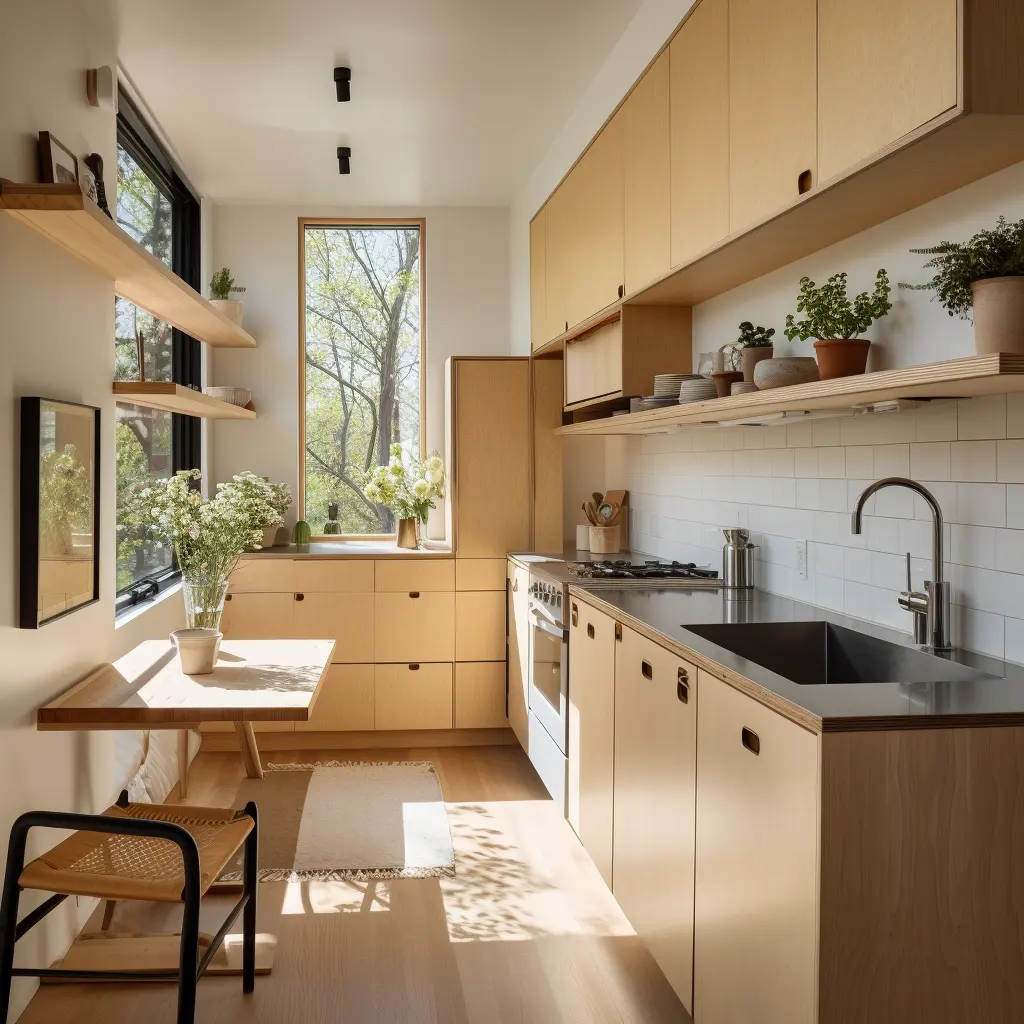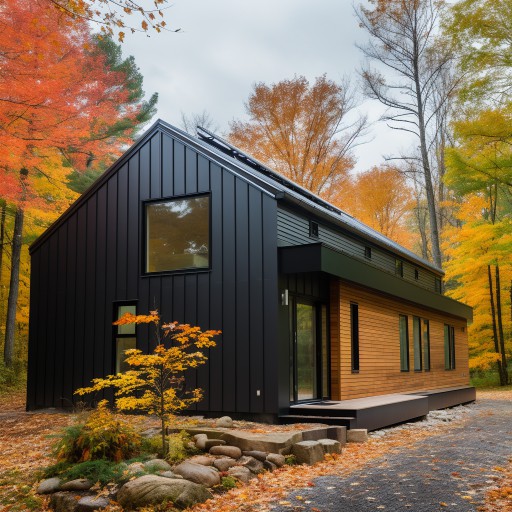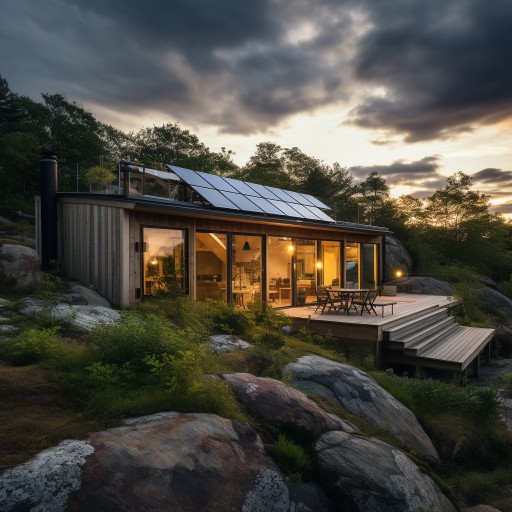The Ultimate Guide to High-Performance Homes

co-founder
- What Makes a Home High-Performance?
- Building or Remodeling a High-Performance Home
- Energy Efficiency in Depth
- Health and Indoor Air Quality
- Durability and Longevity
In an era increasingly defined by climate change, sustainability, and technological innovation, the concept of a "home" is undergoing a revolutionary transformation. Enter high-performance homes—residences that aren't just shelters but ecosystems designed to enhance the quality of life and minimize environmental impact. We will delve into what makes a home high-performance, how to build or remodel one, and why investing in such homes is a win-win for you and the planet.
If you’re interested in going more deeply into every aspect of your home, your home’s performance, and the information you need to know to make your home more energy efficient, you can check out our guide, Making Your Home High Performance. We’ll provide links along the way if you want to learn more.

What Makes a Home High-Performance?
What sets a high-performance home apart from a conventional home? Is it just about energy efficiency, or is there more to the story? Lets explore the characteristics that make a building truly high-performance and why these features are crucial in today's world.
In short, what makes a home performance is a focus on 1) home energy efficiency, 2) durability 3) health and air quality and 4) ensuring that your home is operating effectively, often through various kinds of home automation.
Energy Efficiency
One of the cornerstones of a high-performance home is its energy efficiency. Such homes go beyond the minimum building codes to offer enhanced thermal performance. By focusing on a well-insulated, air-tight building envelope, high-performance homes not only provide comfortable living conditions but also significantly reduce energy bills.
 ###Durability
###Durability
It's not just about saving money on energy; it's also about saving money in the long run. High-performance homes are designed to last, using building materials that are not only resistant to wear and tear but also environmentally friendly. Durability means less frequent repairs and replacements, which translates to cost savings and less environmental impact over time.
Health and Air Quality
You might be surprised to know that indoor air can often be more polluted than outdoor air. High-performance homes tackle this issue head-on by incorporating advanced ventilation systems and using materials with low VOC (Volatile Organic Compounds) content. The result is a home that feels as good as it looks.
Smart Home Technology
In the age of the Internet of Things (IoT), high-performance homes are increasingly becoming "smart." From automated heating and cooling systems to advanced security features, smart home technology is making it easier than ever to manage and interact with our living spaces, providing both comfort and efficiency.
Key Takeaways
- High-performance homes go beyond energy efficiency to offer durability, better air quality, and smart home features.
- These homes are not just cost-effective but are also designed to improve your quality of life while reducing your carbon footprint.

Building or Remodeling a High-Performance Home
Pre-planning and Design Considerations
Before you even break ground or start remodeling, planning is key. Consider factors like the orientation of your home to maximize natural light, which can significantly reduce your energy costs. Also, think about the size of the home; bigger isn't always better, especially when it comes to energy efficiency. Consult with architects and builders who specialize in sustainable design and construction.
Choosing the Right Materials
The choice of building materials can make or break your high-performance home. Opt for sustainable building materials like reclaimed wood, recycled steel, or natural stone. These materials not only have a lower environmental impact but also contribute to the home's overall efficiency and durability. Pay special attention to insulation materials, as they play a crucial role in maintaining an energy-efficient home.
Energy-Efficient Appliances and Fixtures
When outfitting your home, opt for Energy Star-certified appliances. These energy efficient appliances are designed to use less electricity and water, contributing to lower utility bills and a smaller carbon footprint. From refrigerators to washing machines, energy-efficient appliances are an essential component of a high-performance home.
Importance of Certification
Is LEED certification or Passive House certification important? Leadership in Energy and Environmental Design (LEED) certification can be a substantial selling point for a high-performance home. While not necessarily to enjoy the benefits of a eco-friendly home, It signifies that the house meets specific environmental and sustainability standards, giving homeowners peace of mind and potentially increasing the home's market value.
Key Takeaways
- Planning and consultation with experts are crucial for creating a high-performance home.
- Material selection can significantly impact the sustainability and efficiency of your home.
- Energy-efficient appliances and LEED certification can add value to your property and contribute to long-term savings.

Energy Efficiency in Depth
Thermal Performance
Good thermal performance is the backbone of an energy-efficient home. Insulation materials like non-fiberglass spray foam and super-insulation techniques can dramatically improve your home's ability to retain heat in winters and stay cool in summers. Also, consider double- or triple-pane windows for better insulation and natural light.
Role of Renewable Technologies
Technologies like solar panels and wind turbines can take your home's efficiency to the next level. While the upfront cost can be high, the long-term benefits and potential for government rebates make renewable technologies a worthwhile investment.
High-Efficiency Heating and Cooling Systems
Invest in high efficiency heating, ventilation, and air conditioning, aka high-efficiency HVAC systems. Look for features like variable speed motors, dehumidification, and programmable thermostats that allow you to customize your comfort while saving energy.
Key Takeaways
- Thermal performance is a crucial factor in energy efficiency, affecting both comfort and utility bills.
- Renewable technologies are a worthy investment for long-term sustainability.
- Modern HVAC systems can significantly improve the energy efficiency of your home, adding to its high-performance attributes
Health and Indoor Air Quality
The Impact of Indoor Air Pollution
Indoor air pollution is a silent yet significant health concern that many overlook. Research shows that indoor air can be up to five times more polluted than outdoor air, contributing to various health issues like allergies, asthma, and even cardiovascular diseases. The culprits range from volatile organic compounds (VOCs) emitted from paints and cleaning products to particulate matter from cooking and dust.
How to Ensure Good Air Quality
Good air quality starts with the design phase. Opt for open spaces that allow for natural ventilation. When mechanical ventilation is necessary, look for systems with HEPA filters and those that include an air exchange component to bring in fresh outdoor air while expelling stale indoor air. Use air purifiers in areas where natural ventilation is limited. Regardless, the importance of air-tightness in your home cannot be understated for ensuring good air quality

Importance of Material Selection
The materials used in your home can significantly impact air quality. Opt for paints, finishes, and furniture that have low or no VOCs. When it comes to flooring, consider natural materials like bamboo or cork, which don't emit harmful chemicals, unlike synthetic carpets.
Air Quality Monitoring Systems
Modern high-performance homes often include air quality monitoring systems. These systems can measure levels of pollutants like VOCs, carbon dioxide, and particulate matter, providing real-time data that can trigger ventilation systems to kick in when needed.
Key Takeaways
- Indoor air pollution can have serious health implications, making air quality a critical feature in high-performance homes.
- Proper ventilation, air purification, and careful material selection can significantly improve indoor air quality.
- Advanced air quality monitoring systems can provide real-time insights into your home's air quality, enabling automated adjustments for optimal health.

Durability and Longevity
Durability as a Core Principle
Durability is not just about the lifespan of the materials but also about their ability to maintain performance over time. For example, a durable wall insulation material not only lasts long but also retains its insulating properties throughout its life.
Material Selection for Durability
When choosing materials for your remodel, look beyond the initial cost and consider the "whole-life cost," which includes maintenance and potential replacement costs. For instance, while cedar wood siding might be expensive initially, its natural resistance to decay could make it more cost-effective in the long run compared to cheaper, less durable alternatives.
Weather and Location-Specific Durability
Durability also needs to be considered in the context of your home's specific location and climate. Materials that are durable in a dry climate may not perform as well in a wet or humid environment. Make sure to consult with experts to select materials that are well-suited for your local conditions. Your climate dictates the building strategy.
Long-Term Value
A focus on durability can significantly boost the long-term value of your home. A well-maintained, durable home not only saves you money on repairs but can also command a higher market price when you decide to sell. If you’re ready to get started on your journey toward retrofitting your house to be more eco-friendly, we’d love it if you signed up for our services and chatted with one of our experts.
Key Takeaways
- Durability is a multi-faceted concept that encompasses material longevity, performance retention, and adaptability to local conditions.
- Always consider the whole-life cost of materials to make informed, cost-effective decisions.
- Durable homes are not just cost-effective but also contribute to long-term value, making them a smart investment for the future.

Renovate with EcoHome
EcoHome empowers homeowners to confidently build healthy and comfortable homes for a fair price.
Sign UpLocations View All →
NY
- Albany
- Binghamton
- Buffalo
- Esopus
- Freeport
- Hempstead
- Highland
- Kingston
- Long Beach
- Marlboro
- Mount Vernon
- New Paltz
- New Rochelle
- New York City
- Niagara Falls
- North Tonawanda
- Olivebridge
- Plattekill
- Rochester
- Rome
- Saugerties
- Schenectady
- Shandaken
- Syracuse
- Troy
- Utica
- Valley Stream
- Wallkill
- Woodstock
- Yonkers
NJ
- Bayonne
- Brick
- Camden
- Cherry Hill
- Clifton
- East Orange
- Edison
- Elizabeth
- Jersey City
- Lakewood
- Middletown
- Newark
- Old Bridge
- Passaic
- Paterson
- Toms River
- Trenton
- Union City
- Woodbridge
CT
PA
- Allentown
- Altoona
- Bethel Park
- Bethlehem
- Chester
- Easton
- Harrisburg
- Hazleton
- Lancaster
- Lebanon
- Monroeville
- Philadelphia
- Pittsburgh
- Reading
- Scranton
- Wayne
- Wilkes Barre
MD
- Abingdon
- Baltimore
- Bethesda
- Bowie
- Columbia
- Dundalk
- Ellicott City
- Frederick
- Gaithersburg
- Germantown
- Glen Burnie
- Potomac
- Rockville
- Severn
- Silver Spring
- Towson
- Waldorf



